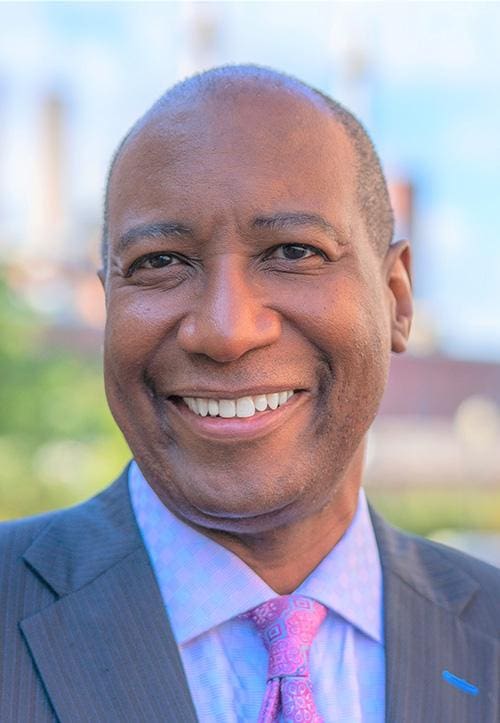ESG creates better financial performance, mitigates legal and brand risk and increases trust. But making ESG gains is about more than improving business metrics. Joe Wilkins, a founding member of the Black Directors Health Equity Agenda, talks about how health equity lies at the center of it all.
With corporate boards more attuned than ever to environmental, social and governance factors, ESG materiality is a prime concern. How can an organization address its sustainability issues and make a positive impact on the community? There is much to learn from the healthcare industry’s focus on health disparities. Organizations in and out of the healthcare ecosystem will benefit from an ESG framework that considers health equity.
The movement to recognize ESG is not a fad, its roots dating to 2004 — when the U.N. Global Compact and 20 financial institutions produced the report, “Who Cares Wins.” ESG was seen from the outset as smart business. In 2023, a Deloitte report found 99% of public companies expect to invest in ESG reporting and technology.
For healthcare boards, the implications are obvious. A proactive ESG approach creates better financial performance, mitigates legal and brand risk and increases trust. And for all businesses, health equity lies at the core of making those ESG gains palpable and significant.
However, ESG calls on board directors across industries to apply a broader view of how they define success. It’s not just a bottom-line matter. Even so, the physical health of an organization’s workforce and community can have a material effect on its financial performance. An obligation to advance health and wellness, especially for stakeholders in the Black community and others who face health inequities, will have ESG implications.
You’ve Brought a Diverse Team to the Table. Now What?
Companies large and small are expected to deepen their focus on diversity, equity and inclusion (DEI) programs over the next several years. But as Janet M. Stovall and Evynn McFalls of NeuroLeadership Institute explain, going beyond lip service means committing to constant improvement efforts.
Read moreDetailsAn ESG framework for health equity
Knowing how to facilitate equity throughout the health ecosystem and evaluate the strengths of an organization can feel like a daunting task. To that end, the Black Directors Health Equity Agenda (BDHEA) has produced a strategic guide for its members in collaboration with Deloitte. “Health Equity’s Essential Role in ESG Conversations” provides a framework for board directors to assess their organizations’ health ecosystem footprint. The ESG planning guide addresses board action across four domains:
- Organization: How do we define and achieve targets for boardroom diversity, data collection and workforce inclusion?
- Offerings: How do we evaluate health equity impact and establish targeted interventions as pilot programs?
- Community: How do we exert leverage by partnering with like-minded organizations — even our competitors?
- Ecosystem: How do we strengthen supply chains and government relationships?
We have found that organizations bold enough to address their industry’s sustainability issues create stronger brands, attract dedicated talent, mitigate risk and achieve robust financial performance.
Yet just as important as the dialog around ESG is who is at the table. Black directors share a frame of reference that combines lived experience, enterprise oversight and the ability to set strategic priorities. This makes them influential in boardroom conversations about human capital, especially as related to the more rigorous DEI reporting requirements. Critical areas such as environmental exposure, decarbonization efforts and workforce health also benefit from the Black director’s perspective.
ESG materiality: Meeting the moment
Deloitte and BDHEA came to mutually appreciate just how much ESG standards are evolving. Truly, no one can stand still, for what applies today could resemble something else entirely in several years — especially as new ESG measurement metrics become accepted and standardized. To achieve the maximum impact, today and tomorrow, we must start where we are and identify the ESG issues that most directly affect health equity, as well as operational efficiency and financial performance.
The issue boils down to this: What’s material and what’s achievable? A meaningful response may address categories as diverse as carbon footprint, diversity in leadership, employee wellness initiatives and community outreach. Each of the three ESG pillars has areas ripe for growth and change:
- Environment is a force multiplier of health disparities. Pollution in Black communities exacerbates cardiovascular issues and exposes residents to greater risk in conditions as disparate as asthma, stroke and breast cancer.
- Social needs have knock-on community health effects. Economic, housing and food insecurities contribute to widespread chronic physical and mental health conditions.
- Governance systematically addresses the drivers of health to meet business objectives.
The call to mitigate risk
As ESG initiatives crystallize, risks will come into clearer focus as well. Smart board members must ask themselves and each other: How do we identify and oversee benefits and risks that may emerge from infusing health equity into our ESG strategy and operations?
The health equity lens provides critical insight into how to mitigate risk and develop a risk management plan. Responsible businesses appreciate their impact on their workforce, community and broader ecosystem, an understanding that helps them reduce consumer and regulatory risk. By contrast, noncompliance creates business risk and market cap erosion, especially as ESG takes a bigger role in reporting requirements.
Demands on Black directors are more intense than ever and will not abate as health disparities persist and, in some cases, widen. The pandemic’s outsized impact on communities of color bore witness to this, even as it put unprecedented pressure on healthcare staff to respond to high rates of Covid infection, hospitalization and death in the Black population.
Even with the worst of the pandemic seemingly behind us, health inequities present a complicated set of clinical and social determinants with no simple response. To address them in an ESG framework, begin with three action steps:
- Determine an individual or committee to be responsible for activating health equity through ESG.
- Evaluate the organization’s “health ecosystem footprint”–how its activities generate or detract from the health and well-being of its workforce, offerings, communities and ecosystem.
- Oversee an assessment of all social impact activities and directly engage with management to support a focus on health equity.
Surely, there is much to do outside the doors of our institutions as well. Pollution provides one example. In Black communities, residents are exposed to markedly higher concentrations of pollution, which is linked to premature deaths from stroke and cardiovascular problems. Asthma is also higher, as is breast cancer.
When companies are fully invested in ESG and the operational pieces fit, they can make the difference that drew us into healthcare in the first place. In 2023, ESG is what success looks like: higher profitability, satisfied employees, cleaner operations and better health outcomes for stakeholders. Put another way, in the hands of purpose-driven black directors, ESG stands for Engage in Serious Good.




 Joe Wilkins MBA, FACHE is a founding member and board director of Black Directors Health Equity Agenda, a Chicago-based group of board directors and senior leaders working to eradicate the health disparities that threaten the prosperity of Black families.
Joe Wilkins MBA, FACHE is a founding member and board director of Black Directors Health Equity Agenda, a Chicago-based group of board directors and senior leaders working to eradicate the health disparities that threaten the prosperity of Black families. 








